Birth positions
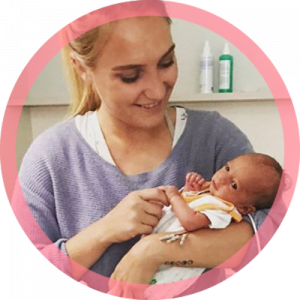
This post was created in collaboration with midwife Vivian.
Click here to read further information about midwife Vivian.
The duration of a birth varies from woman to woman, it is very individual. Rarely does the birth take place in only one birth position. Depending on the birth phase and personal feelings, the woman in labor changes her position more or less frequently. In order to develop a feeling for the respective birth positions, you will find an overview of the birth phases and seven suitable birth positions including advantages and disadvantages in this article.
Stages of birth
Active opening stage
The active opening phase begins when the cervix is already 3cm open. In this phase of labor, contractions become increasingly longer and more intense. They occur approximately every three to six minutes and cause the cervix to open further. This phase ends when the cervix has opened completely, to about 10cm.
Suitable birthing positions: During this phase, it helps many birthing women to adopt a standing or walking birthing position. Gravity and movement increase the downward pressure of the baby’s head, making it easier for the baby to push through the pelvic spaces. Many women also find forward-bending positions and the quadruped position comfortable because they can rest their arms and head.

Contractions are the rhythmic contractions of the uterine muscles controlled by the hormone oxytocin.
During a contraction, the muscles of the uterus contract. This causes the longitudinally striated uterine muscles to shorten, thereby opening the cervix. At the same time, the upper part of the uterus (the fundus) becomes thicker and stronger and can push the baby deeper with each contraction.
Discharge stage
When the cervix is fully open, the baby slides into the birth canal. As more oxytocin is released, contractions increase during this stage of labor. To move deeper into the birth canal with the least resistance, the baby turns its entire body.
The last contractions in the exit phase are called pushing contractions. This pushing phase can last about 20 to 40 minutes. However, this period is very individual (it may well last longer for first-time mothers and much shorter for multiples). The baby’s head exerts pressure on the rectum, which triggers the natural urge to push (pushing contractions are very strenuous for the expectant mother, so it is also useful to adopt a birthing position that relieves the mother during this phase).
First, the baby’s head is born. Here the midwife ensures perineal protection, i.e. exerting pressure on the muscles of the perineum in order to regulate the speed of the passage of the head. In this way, the likelihood of perineal rupture can be reduced. Delivery of the rest of the body occurs during the next contraction, when the baby’s body has turned so that the shoulders fit through the longitudinal oval pelvic outlet.
Appropriate birth positions: The best birthing positions during the exit phase include the quadruped position or deep squat. Again, it can be comfortable to alternate between positions to help the baby make its way through the birth canal.
Birth positions in detail
Walking or standing
This birth position is suitable in the opening phase. You can walk around between contractions and circle your pelvis so that your baby can slide lower. During labor it is better to stand still and hold on to something. This can be a wall bar or your partner. You can also hold on to a rope or cloth hanging from the ceiling and let yourself hang a little. This will take some weight off your legs.
- Advantages: Due to walking, gravity and pelvic circling, the cervix opens faster, so that the birth process is optimally advanced. The contractions are particularly effective and come more regularly. The movement allows the birthing woman to breathe easier and distract herself better from the pain.
- Disadvantages: Although walking around positively advances the birth process, it can become very exhausting in the long run or lead to circulatory problems.
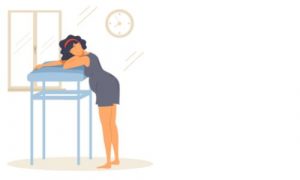
Supine position
The supine position is the most famous among the birthing positions, because it is usually the only position shown in many movies or other media. However, as you will see in the advantages and disadvantages, it is not the most practical and comfortable position to give birth. In the supine position you lie slightly elevated on a bed or a special chair. During the exit phase you bend your legs and clasp the back of your knees with your hands.
- Advantages: The advantages of lying on your back are that you save strength (not like standing or squatting) and you can relax well during labor pauses. In addition, this position is the most favorable for the midwife and the doctor, because they have a good view of the birth process and can intervene quickly in case of complications.
- Disadvantages: The disadvantages outweigh the disadvantages with the supine position. Your birth canal is narrower when you are lying down and your pelvis is more immobile. In addition, gravity cannot be utilized, so labor is not as effective as in other positions. All this means that the birth will take longer and you may experience more pain. In this position it is also possible that your baby presses on the vena cava (vena cava syndrome). This prevents your blood from flowing back, which can lead to symptoms such as dizziness or nausea.
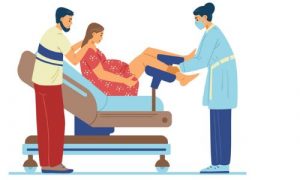
Lateral position
In the lateral position you lie similar to the supine position except that you turn on your side.
- Advantages: By lying on your side, your vena cava and pelvis are relieved and, similar to the supine position, you can relax better during breaks in labor. If your baby is not yet in the right position, you can encourage it to turn by using this position.
- Disadvantages: Similar to the supine position, the birth canal is much narrower in the side position (but still slightly wider than in the supine position) and the pelvis is more immobile. Gravity cannot be utilized here either and contractions are less effective. This can lead to a more painful and longer lasting birth.
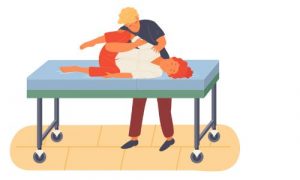
Quadruped stand
In the quadruped position, also called knee-elbow position, you kneel on the floor or a bed. With your upper body bent forward, you can support yourself on the floor, a pillow or a pezzi ball.
- Advantages: In this position you have a lot of freedom of movement and you can relieve your back and spine. Since you can breathe better, the contractions are easier to endure and “breathe away”. The birth process is accelerated because gravity supports you and you can move your pelvis very freely. Since there is less pressure on the perineum, the risk of perineal tears decreases.
- Disadvantages: This posture is unfamiliar and can become very tiring in the long run.
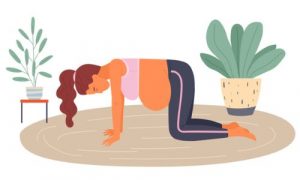
Sitting
If you want to give birth to your baby in a sitting position, you have three options: a birthing stool, a pezzi ball or a normal chair. If you use a chair, you can sit on it with your back wide open and hold on to the backrest. If you feel most comfortable with a pezzi ball, you can sit on it, rocking slightly and circling your pelvis. The birthing stool has no backrest and is shaped like a semicircle. When you sit on it, you can either lean against your partner or hold on to a rope hanging from the ceiling. Only the birthing stool is suitable for the last phase of birth, as sitting positions on a Pezzi Ball or chair would block the exit.
- Advantages: In this seated position, you can be optimally supported or massaged by your partner. Since you are sitting upright, more pressure is exerted on the cervix, so gravity helps to drive the birth forward. Sitting gives you more freedom of movement and stability at the same time. There is less pressure on your sacrum and you get better air. If you bend forward in this position, you also relieve the back, pelvic floor and perineum.
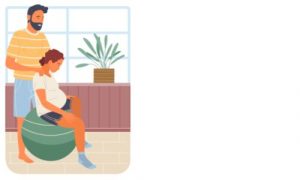
Squatting
In this position you either squat on your heels or on a birth stool. If this position becomes too exhausting, your partner can support you or you can hold on to a rope hanging from the ceiling.
- Advantages: In the squat position, contractions are much more effective, as more pressure is exerted on the cervix and your pelvic outlet is particularly wide open. In this position, you can actively and purposefully push along, which is why it is also particularly suitable for the discharge stage.
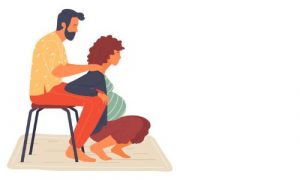
Water birth
Water birth is becoming more and more popular. Today, about every 20th child is born in a birthing tub. The expectant mother lies in a birthing tub (also possible in a normal bathtub) with warm water (34 to 36 degrees Celsius), which helps with relaxation, as well as calming and pain relief. In addition, with water birth there is a lower risk of perineal tear, because the muscles and tissues are softer and more stretchable. A water birth is also gentler for the newborn because he or she slides from the amniotic fluid directly into the warm water of the tub, allowing him or her to acclimate more slowly to the new environment. You don’t have to worry about your baby breathing in water, because the breathing reflex still works underwater.
It is important to note that a water birth is only an option if there are no risks for mother and baby, because quick medical intervention is not possible during a water birth. In case of multiple births, a bad CTG of the baby (cardiotocography= simultaneous measurement of the contractions of the uterus and the heart sounds of the baby) or a breech presentation of the baby, a water birth is not possible. You must also keep in mind that an epidural is not possible for a birth in the tub. PDA (epidural anesthesia) is an anesthetic procedure to relieve severe pain during childbirth. For this, the doctor injects a drug near the spinal cord to suppress the signal transmission of the nerves for a certain time.
If you decide to have a water birth, it is important to keep the following point in mind when preparing: For a water birth, it is important for the safety of the clinic staff to have the results of an HIV test and a hepatitis C test of the pregnant woman. These tests are included in the standards of preventive care.

Which birth position is the best for me?
There is no universal answer to this question. In the course of the birth, depending on the birth phase and how you feel, you will intuitively move into the positions that feel best for you and with which you feel most comfortable. If you are not sure, your midwife will support you in choosing a suitable position that will optimally promote the birth of your baby in the respective phase.
Generally, it is recommended to give birth in an upright position, as this helps gravity, you can breathe better, your baby slides through the pelvis more easily and the risk of birth injuries is reduced.
You can also study and practice the different birthing positions before you give birth. This gives you the opportunity to discuss with your midwife and/or partner which positions you feel comfortable with. This will give you security and confidence for the upcoming birth of your child.
No matter which birthing position you decide on or which one you end up taking: always stay focused and positive! Think about your little baby that you you will hold in your arms soon.
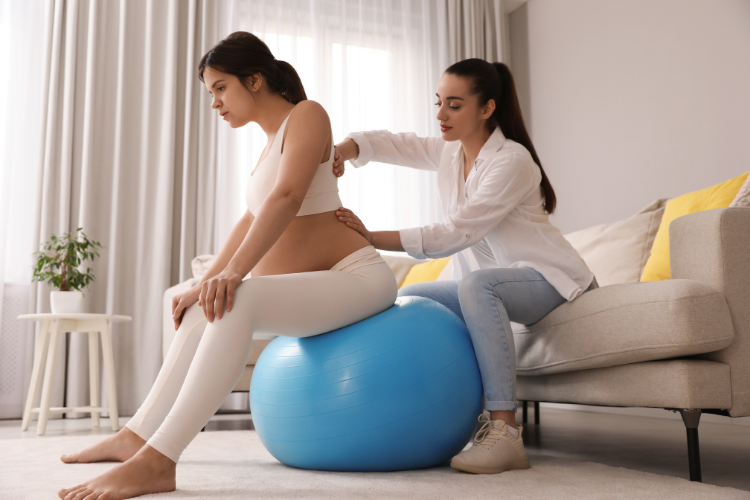
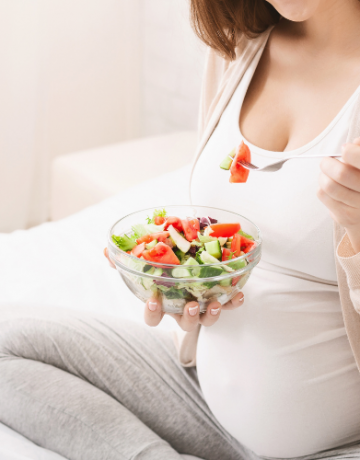
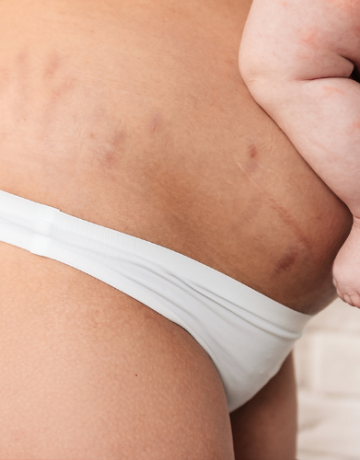
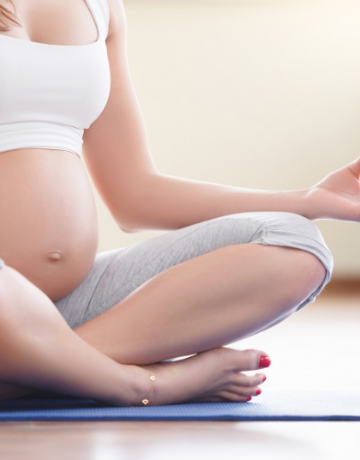

Comments (0)